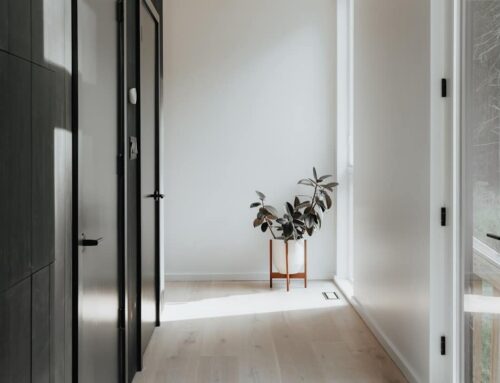Renovate or Sell As-Is? A Guide to Maximizing Your Return
As you prepare to sell your home, you’ll inevitably face a critical, and often costly, question: “Should I invest thousands of dollars in renovations, or should I sell my home as it is?” It’s tempting to believe that a brand-new kitchen or a sparkling, modern bathroom will guarantee a higher selling price. But the truth is, not all renovations are created equal. Deciding whether to renovate is a strategic business decision, not just a home improvement project.
The right choice isn’t one-size-fits-all. It depends heavily on your home’s current condition, local market trends, and your personal budget and timeline. A project that adds significant value in one neighborhood might be a waste of money in another. So, how do you decide?
This guide is here to help you navigate that decision. We’ll break down which updates consistently provide the best return on investment (ROI), which popular projects you should probably skip, and when selling “as-is” is actually the smartest financial move you can make.
The “Fix-It” Philosophy: High-Impact, Low-Cost Wins
Before you even think about knocking down walls or hiring a contractor, your focus should be on the small, high-impact updates that make a huge first impression without a huge budget. These aren’t full-scale renovations; they are the essential prep work that tells buyers your home is well-maintained and cared for. Buyers form an opinion within seconds of walking through the door (and often before, from the online listing), so these details matter more than you think.
- A Fresh Coat of Paint: This is arguably the single most effective and affordable “renovation” you can make. A fresh coat of neutral paint (think light grays, soft whites, or warm greige tones) instantly makes a home feel brighter, cleaner, and larger. It erases years of wear and tear and helps buyers envision their own belongings in the space.
- Minor Kitchen & Bath Touch-Ups: You don’t need to gut these rooms to make them shine. Start by swapping dated brass or ceramic cabinet pulls for modern hardware in brushed nickel or matte black. Consider reglazing a stained bathtub or re-grouting tired tile to make it look new again. Replacing an old, discolored faucet is another quick fix that makes a big difference.
- Curb Appeal is King: A buyer’s first impression starts at the curb. Power washing your siding, driveway, and walkways can take years off a home’s appearance. Tidy up landscaping by trimming bushes, weeding flower beds, and laying down a fresh layer of mulch. Finally, consider painting your front door a welcoming color—it’s a small detail that packs a big punch.
- Update Lighting & Fixtures: Nothing dates a home faster than old, tarnished light fixtures. Swap out those dated chandeliers and ceiling fans for clean, modern alternatives. This simple change can dramatically update the feel of a room for a relatively low cost.
The Big Ticket Renovations: Where to Get the Best Bang for Your Buck (ROI)
Once you’ve handled the low-cost essentials, you might consider a more significant project. However, this is where you need to be strategic to avoid over-investing. The goal is to choose updates that appeal to the widest range of buyers and consistently deliver a strong return on investment. While local market conditions can cause numbers to vary, these projects are perennial winners.
1. Minor Kitchen Remodel
- What it is: This isn’t a full gut job. A minor remodel focuses on high-impact cosmetic updates. Think painting your existing cabinets or, if they are very dated, refacing them. Replace old laminate countertops with an affordable but durable option like quartz or butcher block. Add a clean, simple subway tile backsplash and, if the budget allows, upgrade appliances to a matching stainless steel set.
- Why it works: The kitchen is the heart of the home and a critical selling point. A dated kitchen can stop a buyer in their tracks. These strategic updates create a fresh, modern feel that allows buyers to imagine themselves cooking and entertaining there, often recouping over 80-90% of the project’s cost at resale.
2. Bathroom Remodel
- What it is: Similar to the kitchen, you don’t need to move plumbing or create a spa. A high-ROI bathroom remodel involves replacing the vanity, installing modern and attractive floor tile, updating the toilet, and swapping out old fixtures (faucet, showerhead, lighting) for new ones in a contemporary finish like matte black or brushed nickel.
- Why it works: A clean, stylish bathroom feels like a personal luxury. Buyers notice dated, grimy bathrooms immediately, and an updated one can make the entire home feel more move-in ready and valuable, typically returning 70-80% of its cost.
3. Refinishing or Replacing Flooring
- What it is: Unify your home’s look by refinishing existing hardwood floors to make them gleam again. If your floors are a mix of worn-out carpet and old tile, consider replacing them with a consistent, attractive, and durable flooring like Luxury Vinyl Plank (LVP) or new, neutral-colored carpeting.
- Why it works: Scratched, stained, or mismatched flooring makes a home feel old and poorly maintained. New, cohesive flooring creates a seamless flow throughout the house, making it feel larger, cleaner, and instantly updated. This investment often sees a return of over 100%.
Renovations to Reconsider: The ROI Danger Zone
Just as important as knowing what to renovate is knowing what not to. The following projects are often expensive, highly subject to personal taste, and rarely provide a good return for sellers. You may love the result, but it’s unlikely a buyer will pay a premium for it.
- The Ultra-High-End Kitchen: While a minor kitchen remodel has a great ROI, a major one with commercial-grade appliances (like a Sub-Zero refrigerator or Wolf range) and expensive custom cabinetry almost never pays for itself. Most buyers appreciate a nice kitchen, but they won’t pay the steep premium for a chef’s paradise.
- Adding a Swimming Pool: This is the classic example of a low-ROI project. Not only is a pool incredibly expensive to install, but it can also narrow your pool of potential buyers. Many families see a pool as a safety hazard, a maintenance hassle, and an ongoing expense.
- Highly Personal or Niche Upgrades: That basement home theater, custom wine cellar, or built-in library might be your dream feature, but it’s unlikely to be the buyer’s. Converting functional spaces like bedrooms or garages into hyper-specific hobby rooms can actively hurt your home’s value.
- Major Structural Changes: Avoid projects that involve moving walls, adding on to the house, or finishing a basement just for the sake of a sale. These renovations are extremely expensive and time-consuming, and the return is never guaranteed. It’s often better to let the next owner undertake such a large project to their own taste.

The “As-Is” Advantage: When Doing Nothing is the Smartest Move
With all the talk of renovations, it’s easy to feel pressured to make changes. However, there are several key situations where the most strategic and profitable decision is to sell your home completely “as-is.” This approach isn’t about being lazy; it’s about being smart and recognizing market realities.
- You’re in a Strong Seller’s Market: When inventory is low and buyer demand is high, the market dynamics work in your favor. In these conditions, buyers are competing for a limited number of homes and are far more willing to overlook cosmetic imperfections or dated features just to secure a property. Your home’s inherent value—its location, size, and layout—is what drives the sale, not a freshly renovated bathroom.
- The House is a “Fixer-Upper”: If your home needs extensive, system-wide work (like a new roof, updated electrical, and major plumbing repairs), a minor cosmetic fix won’t make a difference. In this case, your target audience changes. You are now marketing to investors, flippers, or ambitious buyers who are specifically looking for a project. They want to buy at a lower price point and will do the renovations themselves, to their own standards. Overpricing a fixer-upper because you put in new kitchen countertops will only cause it to sit on the market.
- You Don’t Have the Time or Capital: Let’s be realistic: renovations require significant upfront cash and can take weeks or even months to complete, delaying your sale. If you need to sell quickly due to a relocation or other life event, or if you simply don’t have the liquid funds to invest, selling as-is is a perfectly valid and often necessary strategy.
Conclusion: Your Best Strategy is a Professional One
Deciding whether to renovate or sell as-is is one of the most important financial decisions you’ll make as a home seller. The key is to move past personal taste and emotion and instead focus on one thing: return on investment. By prioritizing high-impact, low-cost fixes, being strategic about larger projects, and knowing when to leave things alone, you can ensure you don’t leave money on the table.
Before you pick up a paintbrush or a sledgehammer, let’s talk. A customized analysis of your home’s position in our current market is the only way to create a selling strategy that truly maximizes your final profit. Contact us for a personalized consultation today.










